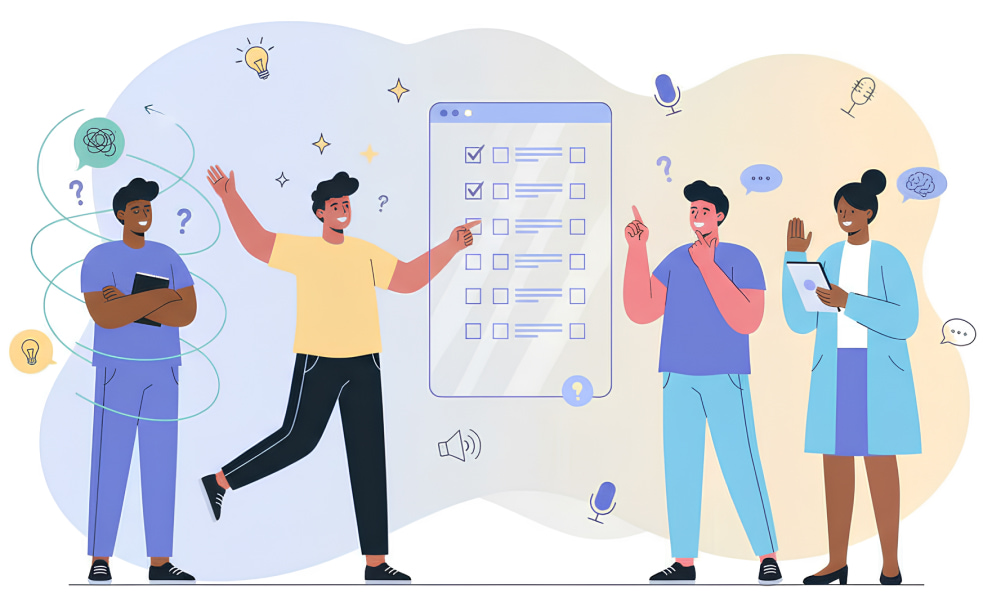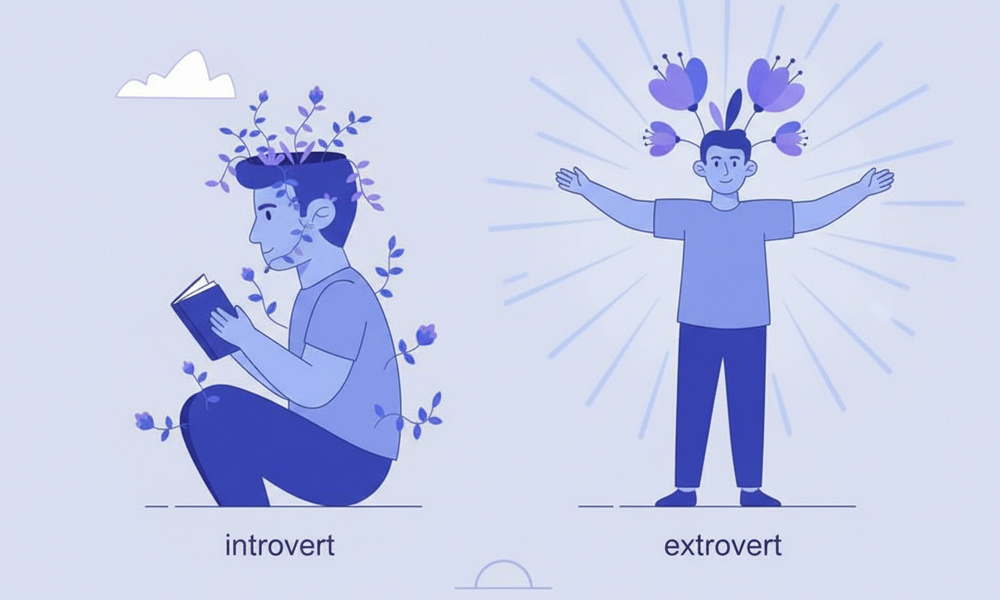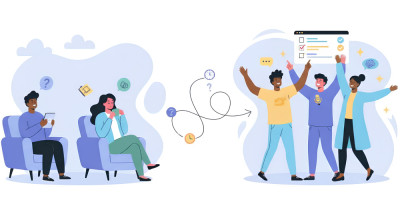Take Introvert Vs Extrovert Test to Determine Your Type
New Updates



Take Introvert & Extrovert Personality Test
Get StartedDiscover Your True Personality With Our Introvert Vs Extrovert Test
Most people recognize that social energy varies from person to person, yet few know how systematically psychologists study those differences. A well-crafted assessment can translate daily habits, like how you recharge, process ideas, and communicate, into reliable insights. You’ll learn how context shapes your energy, why preferences shift across situations, and which environments help you perform at your peak. Across research and coaching, the introvert vs extrovert test helps clarify whether your energy patterns lean inward or outward during typical days. Rather than boxing you in, a sound instrument illuminates tendencies, offers language for patterns you already feel, and reveals small tweaks that dramatically improve focus and well-being.
Psychologists trace these ideas to early temperament models, refined by modern trait theory and behavioral science. When used thoughtfully, an introvert test becomes a mirror for habits you can optimize, not a verdict on who you must be. Because personality exists on a spectrum, a balanced introvert vs extrovert test highlights gradients rather than extremes. That nuance shows up in how you prefer collaboration, manage downtime, and handle stimulation, turning vague intuitions into clear, actionable guidance.
- Identifies energy drains and refuels with precision.
- Connects daily choices with measurable patterns.
- Supports communication that reflects your natural pace.
- Informs boundary setting and sustainable productivity.

Benefits, Validity, and Practical Payoffs for Work and Life
Good assessments balance clarity with complexity, showing how social energy preferences intersect with motivation, attention, and stress. You’ll see why two people can thrive in the same role for different reasons, and why the right environment often beats raw willpower when it comes to performance and recovery. Many modern tools acknowledge mid-spectrum nuance, and an introvert, extrovert, ambivert test recognizes flexible patterns across different contexts. That flexibility helps teams distribute roles intelligently, letting each person work where their energy naturally stays steady.
Scientific rigor matters, so reliability and construct validity should be transparent. A thoughtfully designed introversion extroversion test reports the method behind its scales, including item development, pilot testing, and norm groups that reflect diverse populations. Practical benefits extend beyond labels, influencing collaboration styles, meeting formats, and focus strategies. In people operations, a personality test for introvert and extrovert can guide onboarding, talent development, and conflict prevention when coupled with training and ethical use.
- Better meeting design and asynchronous workflows.
- More humane scheduling that respects energy cycles.
- Tangible methods for deep work and recovery.
- Clear language for setting expectations with peers.
How to Use Your Introversion & Extroversion Test Results
The best approach is to take an instrument in a calm, reflective state, answer honestly about typical behavior, and avoid gaming for a desired outcome. Your goal is clarity, not perfection, because good insight reveals leverage points you can use immediately to reshape routines and environments. When cost is a factor, seekers often start with an introvert test free tool to explore their baseline. That initial snapshot can guide whether a deeper, professionally validated assessment would be worth the investment.
Interpretation works best when you compare multiple moments from your life, workdays, weekends, high-pressure weeks, and notice consistent themes. If your patterns shift across settings, an ambivert test may describe the blend accurately, revealing when to lean in or pull back to stay effective. Results become powerful when you translate them into daily moves, like structuring your calendar, curating your environment, and agreeing on communication norms with your team. For those seeking clarity on outward energy and social activation, an extrovert test can pinpoint the conditions where outward engagement amplifies strengths rather than causing fatigue.
- Schedule high-focus tasks during your natural energy peaks.
- Use recovery rituals that actually replenish you.
- Match collaboration formats to your processing style.
- Set boundaries that protect deep work and mental space.

Compare Tests to See If You Are Introvert or Extrovert
Not all instruments measure the same constructs, so it’s essential to read what each scale actually captures: energy sourcing, social comfort, stimulation sensitivity, or cognitive style. With that knowledge, you’ll choose a tool that maps to your goals, career clarity, team fit, creative flow, or stress management across complex projects. Some frameworks examine cognitive preferences, and an introverted thinking test focuses on analytical structuring rather than social energy alone. That lens can illuminate why certain problem-solving tasks feel effortless while others demand significant energy.
Broader tools estimate social energy patterns across situations, and an introvert extrovert personality test translates those preferences into practical strategies for collaboration and focus. You get language for negotiating schedules, meeting formats, and communication cadences that actually work for you. When your goal is clarity rather than a label, a test to determine introvert or extrovert should provide context ranges, plain-language explanations, and tangible next steps. That combination turns insight into action, bridging the gap between awareness and real-world change.
- Check whether the tool discloses its development process.
- Look for clear scoring, confidence intervals, and limitations.
- Prefer interpretations that suggest behaviors, not boxes.
- Revisit results after life changes to validate stability.
Take Introvert & Extrovert Personality Test
Get StartedFrequently Asked Questions
-
Are these assessments accurate enough to guide career or lifestyle decisions?
They can be very useful when they report their methods, show reliability data, and are interpreted as probabilities rather than absolutes. Treat them like a compass that gets you pointed in the right direction and then confirm with real-life experiments and feedback from trusted colleagues.
-
Can results change over time, or are they fixed?
Core preferences often remain stable, yet context, health, and life events can shift how you express them. That’s why reflective journaling and periodic retesting help you notice meaningful changes and adapt routines without fighting your nature.
-
How should I use my results for better communication and collaboration?
Share your working preferences with teammates and ask for theirs in return, then co-create norms for meetings, messaging, and response windows. For individual reflection, an introvert personality test can spark conversations about how you recharge and when you do your best work.
-
What about free tools, are they worth it?
Free options can provide a helpful starting snapshot, especially when they explain scoring plainly and avoid one-size-fits-all advice. For ongoing self-coaching, an introvert extrovert test online free can be a low-friction way to check patterns before investing in a more rigorous instrument.
-
How do type-based systems fit into this topic?
Type lenses summarize complex patterns into memorable categories that can be useful shorthand when used carefully. In that landscape, a Myers-Briggs personality test introvert perspective can illuminate how you process information and recharge, provided you supplement it with trait-based insights and behavioral experiments.
 The Guide to Understanding Introversion and Extroversion
The Guide to Understanding Introversion and Extroversion